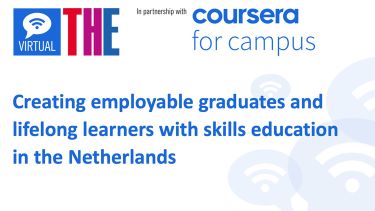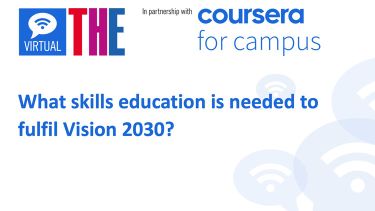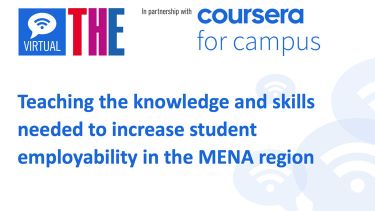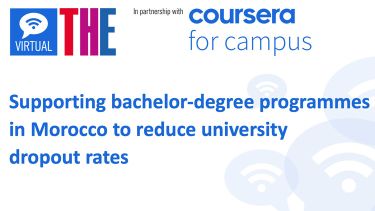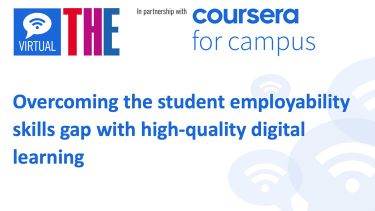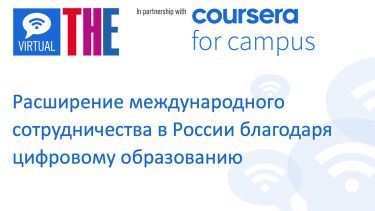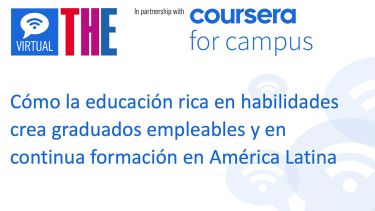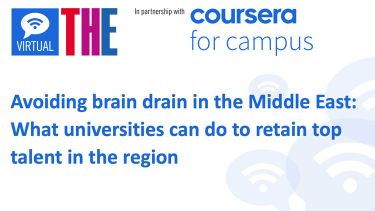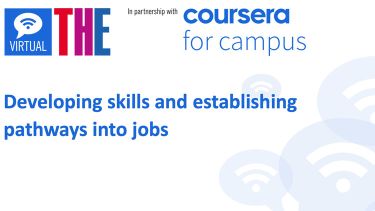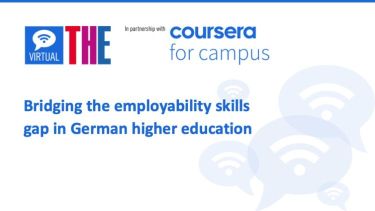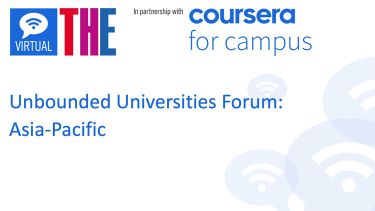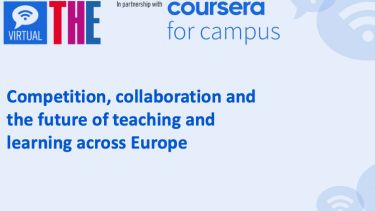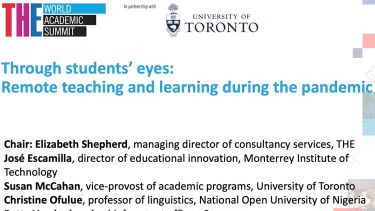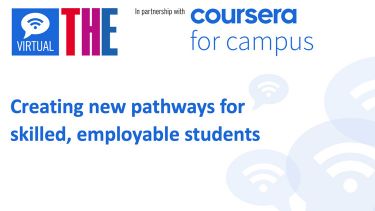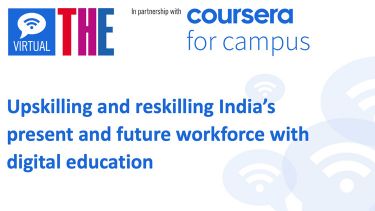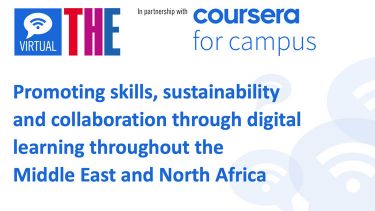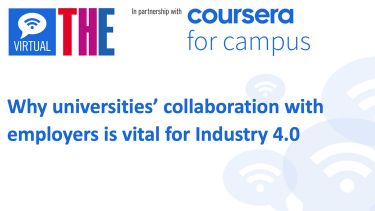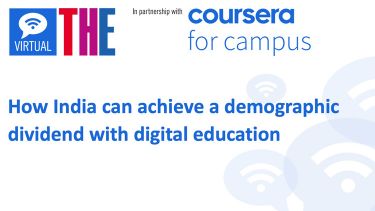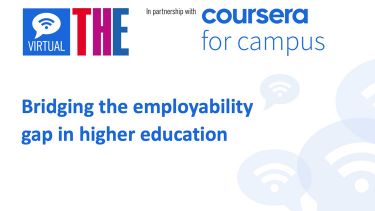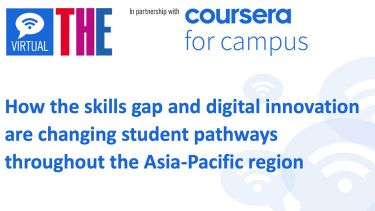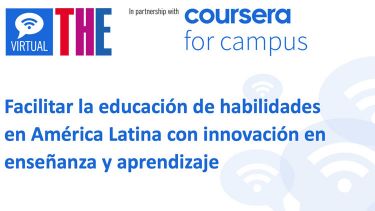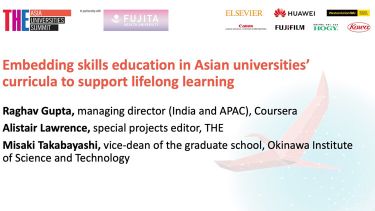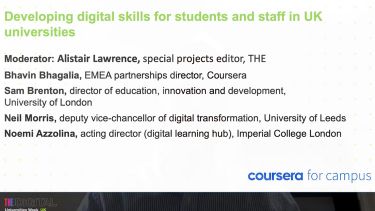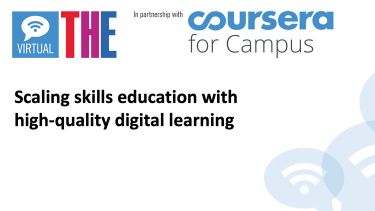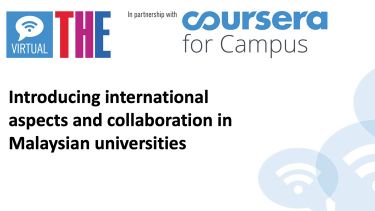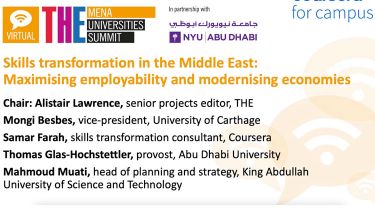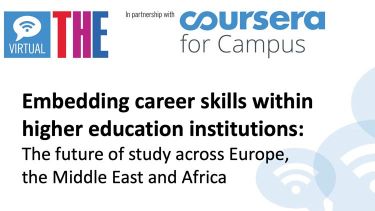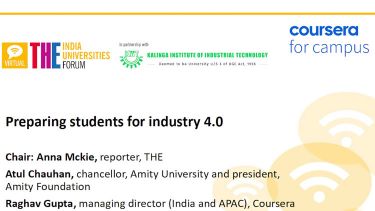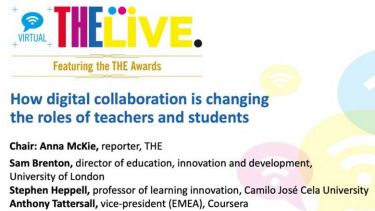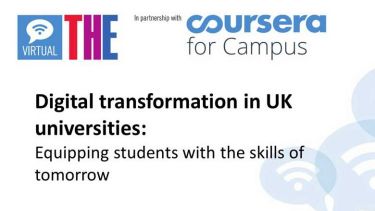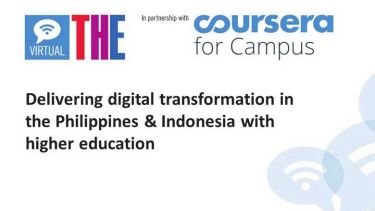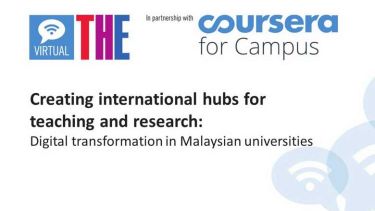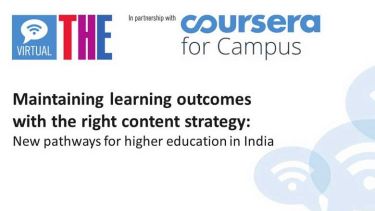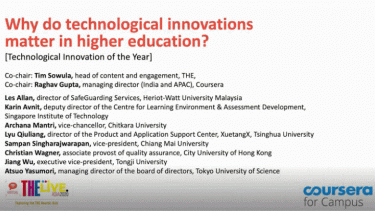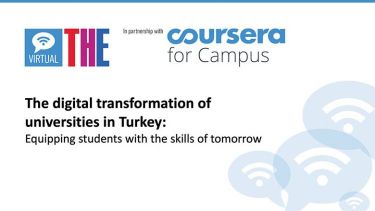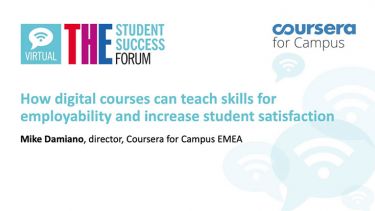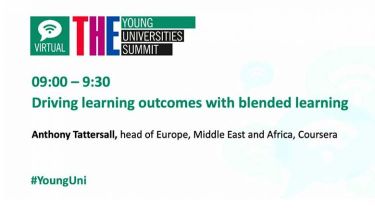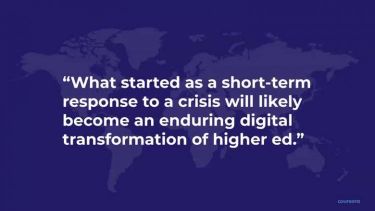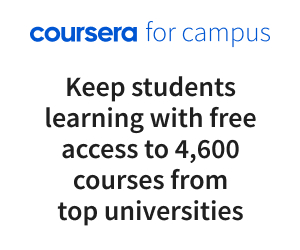Online learning platforms offer institutions access to courses that they may not be able to teach on campus
Webinar held in November 2021.
Jobs increasingly require students to have multidisciplinary skills, but it is difficult for students to acquire a spread of capabilities in the traditional offline university model, said the panellists of a webinar held in partnership between Times Higher Education and online learning platform Coursera.
From agricultural technology to medical technology, “there are various multidisciplinary job opportunities coming up”, said Monica Khanna, director of the K.J. Somaiya Institute of Management in India. A multidisciplinary approach to teaching “helps the students to be job ready”.
Real-world problems tend to be interdisciplinary and multidisciplinary, said Amik Garg, director of the KIET Group of Institutions in India. However, individual universities can struggle to offer their students a wide variety of high-quality courses, he cautioned. “An institution which is working totally on the offline mode cannot give exposure to such a variety of courses,” he said.
His institution partnered with Coursera at the beginning of the pandemic and saw more than 34,000 course registrations from faculty as well as non-teaching staff. The best example of multidisciplinary education, he said, was the development of IT literacy at his institution. These are skills that employers are also hungry for, irrespective of the industry.
Raghav Gupta, managing director at Coursera, said the company engages with thousands of businesses around the world. “Almost every business has said that they are going to digitise a lot more,” he said. “And many businesses have seen traditional jobs that have been lost, traditional skills that have been lost, specifically if they required a repeatable human task.”
To cope with this rapid workplace shift, the world of higher education is changing, Gupta said. In the past, university-employed staff taught students within the four walls of the institution. “But we are moving to a situation where we will see 60, 70, 80 per cent of the learning coming from within the four walls of the institution, but the rest coming from outside, possibly via platforms like Coursera,” he said.
Hybrid learning is here to stay, the panellists said. “With online learning, the classroom boundaries have broken, and we can get the best faculty from any part of the world,” Khanna said. At the same time, students expect more of a “buffet style” approach to education where they can choose what they want to learn, she said.
The panellists agreed that while teaching is changing, so is assessment, with a drive to making graduates more job ready.
For Khanna, “the entire concept of assessment should be application. How can you apply your knowledge and theory to what is the situation you’re facing in front of you?”
In the middle of 2020, Coursera introduced guided projects that allow students to practically learn new skills and gain experience. Gupta said guided projects enabled students to learn how to use different software programmes without having to pay for the expensive technology suite.
But there is no one-size-fits-all. Garg said that his institution had found great success with continuous assessment, which ensures that learners come to classes prepared and learn what the lecturer aimed to impart. However, the mode of assessment depends on the course, faculty and students, he said.
The panel:
- Amik Garg, director of the KIET Group of Institutions
- Raghav Gupta, managing Director at Coursera
- Monica Khanna, director of the K.J. Somaiya Institute of Management
- Ashton Wenborn, special projects deputy editor, Times Higher Education (chair)
Watch the webinar on demand above or on the THE Connect YouTube channel.
Find out more about Coursera for Campus.






